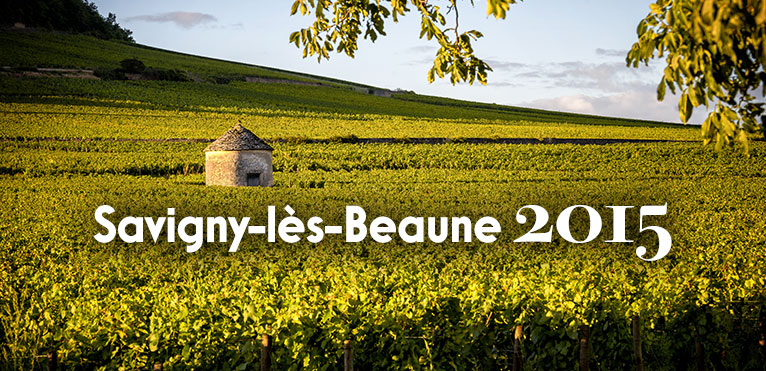
Contents
Location and terroir
Savigny-Lès-Beaune is a Burgundy appellation d’origine contrôlée located north of the Côte de Beaune, in the Côte d’Or region of Burgundy, between the prestigious Corton mountain and the famous village of Beaune.
This 345-hectare appellation includes climats in the “Village” appellation and 22 in the “Premier Cru” appellation. In Burgundy, the “Premier Cru” and “Grand Cru” appellations are not awarded on the basis of a classification, as in Bordeaux, but according to the parcel of land, known as the “climat”, from which the grapes come. The “Premiers Crus” and “Grands Crus” are very often located on hillsides, above the departmental road that crosses the Côte de Nuits and Côte de Beaune. The slope gives the grapes better exposure and therefore higher concentrations during ripening. It also minimizes the risk of frost, as the cold descends. The “Village” appellations are located around the village that gives its name to the appellation, on the other side of the departmental road, in the plain.
In Savigny-Lès-Beaune, the best-known climats include “Les Marconnets”, “Aux Clous” and “La Dominode”.
The hillsides are mainly composed of reddish-brown limestone, providing excellent drainage and allowing Pinot Noir and Chardonnay, the only grape varieties authorized for red and white respectively, to flourish. At the bottom, the soil is more clayey, which can be problematic in the event of heavy rainfall, as clay retains water well, or on the contrary very beneficial in the event of very dry periods.
History
Like the rest of the Côte de Beaune and Côte de Nuits, Savigny-Lès-Beaune owes its winegrowing development to the monks of the Cîteaux abbey around the 10th century. In 1395, Philippe le Hardi, then Duke of Burgundy, decided to improve the quality of his duchy’s wines by banning the “disloyal gamay” grape variety and decreeing single-varietal viticulture, which is still in force today: pinot noir for reds and chardonnay for whites!
Wines
Savigny-Lès-Beaune red is a deep cherry color. The nose reveals notes of red and black berries such as blackcurrant, raspberry and wild strawberry, as well as flowers such as violet. On the palate, the wine is generally supple, with discreet tannins, good acidity and a certain roundness, thanks in particular to the practice of pumping over or punching down, which accentuates the extraction of the qualitative components present in the lees. Barrel ageing, at the winemaker’s discretion, can also bring more roundness and tannins to the wine, as well as aromas that evolve with age towards notes of cloves and sometimes truffles.
This wine goes perfectly with roast poultry or poultry in sauce. The “Premiers Crus”, which are often fuller, go wonderfully with fine cuts of beef.
Savigny-Lès-Beaune blanc has a golden color with green highlights. The nose develops notes of white flowers, citrus fruits such as grapefruit, and sometimes a mineral touch. Depending on barrel ageing, the wine may have brioche, toast or vanilla notes. On the palate, the attack is often lively and fresh. Winemaking choices will bring more or less fat, roundness and length to this wine. As it ages, it becomes smoother and develops notes of hawthorn, undergrowth, honey and dried flowers.
It goes well with tasty fish such as turbot or sole, but also with all types of goat’s cheese.
Vintage 2015
A perfect vintage, simply perfect! Flowering comes early, at the beginning of June, thanks to clement weather, and everything follows on very quickly: the harvest begins at the end of August, to avoid over-ripening! The hot, dry summer weather ensured that the grapes were in perfect health, but reduced yields, concentrating the grapes even more.
The result is sublime: the wines have a rare delicacy and intensity, but retain a certain acidity, ensuring a fine balance.
Photo : Adobe Stock – Massimo Santi
Related articles
Savigny-lès-Beaune: the 2015 vintage : les vins les mieux notés sur Twil
Je découvre